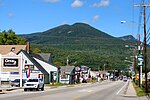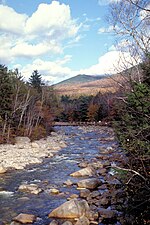Clark's Bears
1928 establishments in New HampshireAmusement parks in New HampshireBuildings and structures in Grafton County, New HampshireHistoric American Engineering Record in New HampshireLincoln, New Hampshire ... and 4 more
Museums in Grafton County, New HampshireOperating amusement parksRoadside attractions in the United StatesTourist attractions in Grafton County, New Hampshire
Clark's Bears, named Clark's Trading Post until 2019, is a visitor attraction in Lincoln, New Hampshire, United States, in the White Mountains. It is known for its trained bears and for the White Mountain Central Railroad, a 30-minute, 2.5-mile (4.0 km) steam-powered train ride. The attraction is located along U.S. Route 3, one mile (1.6 km) north of the village of North Woodstock and 9 miles (14 km) south of Franconia Notch.
Excerpt from the Wikipedia article Clark's Bears (License: CC BY-SA 3.0, Authors).Clark's Bears
Daniel Webster Highway,
Geographical coordinates (GPS) Address Nearby Places Show on map
Geographical coordinates (GPS)
| Latitude | Longitude |
|---|---|
| N 44.048333333333 ° | E -71.685555555556 ° |
Address
Trained Bear Shows
Daniel Webster Highway
03251
New Hampshire, United States
Open on Google Maps







